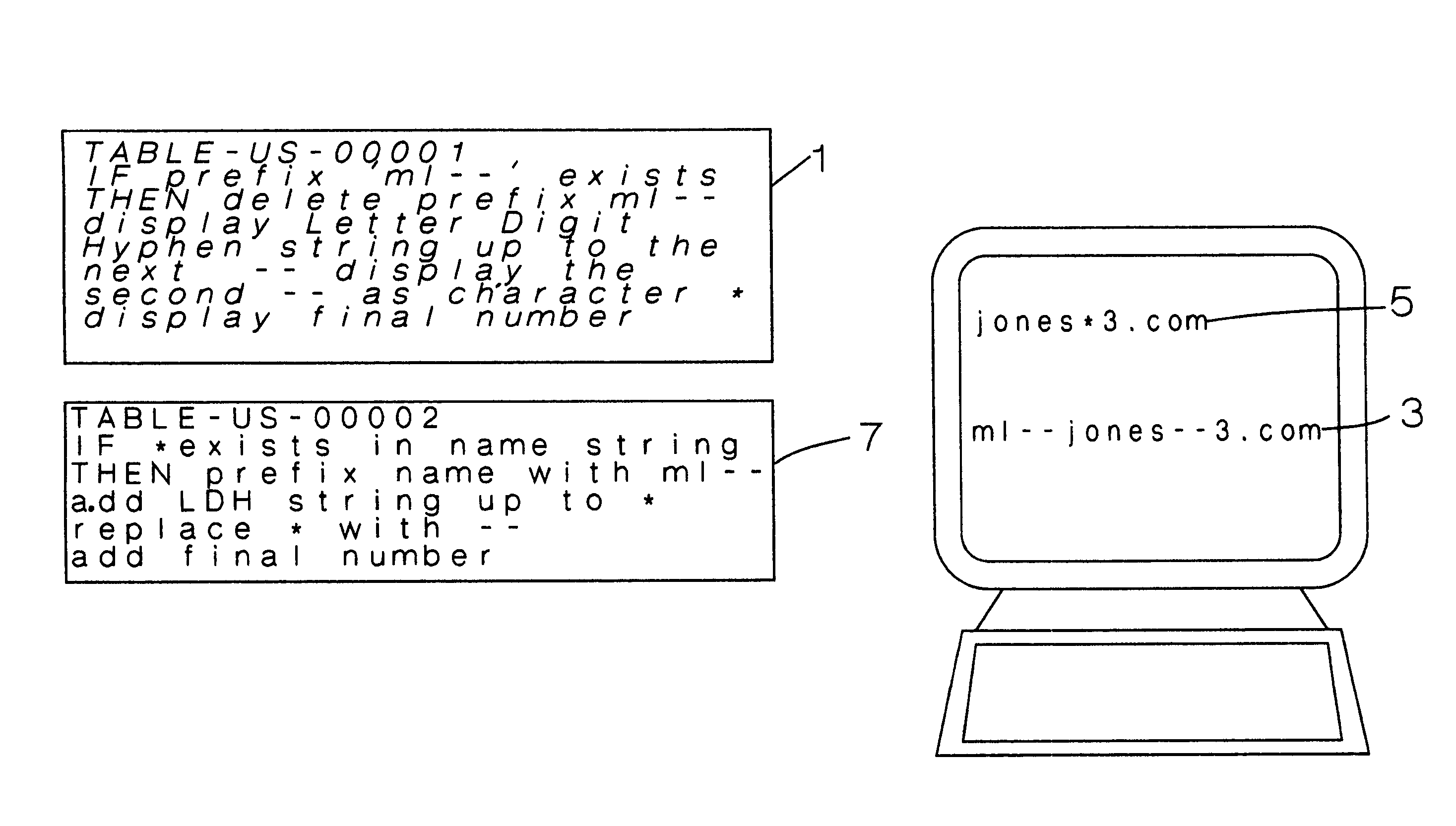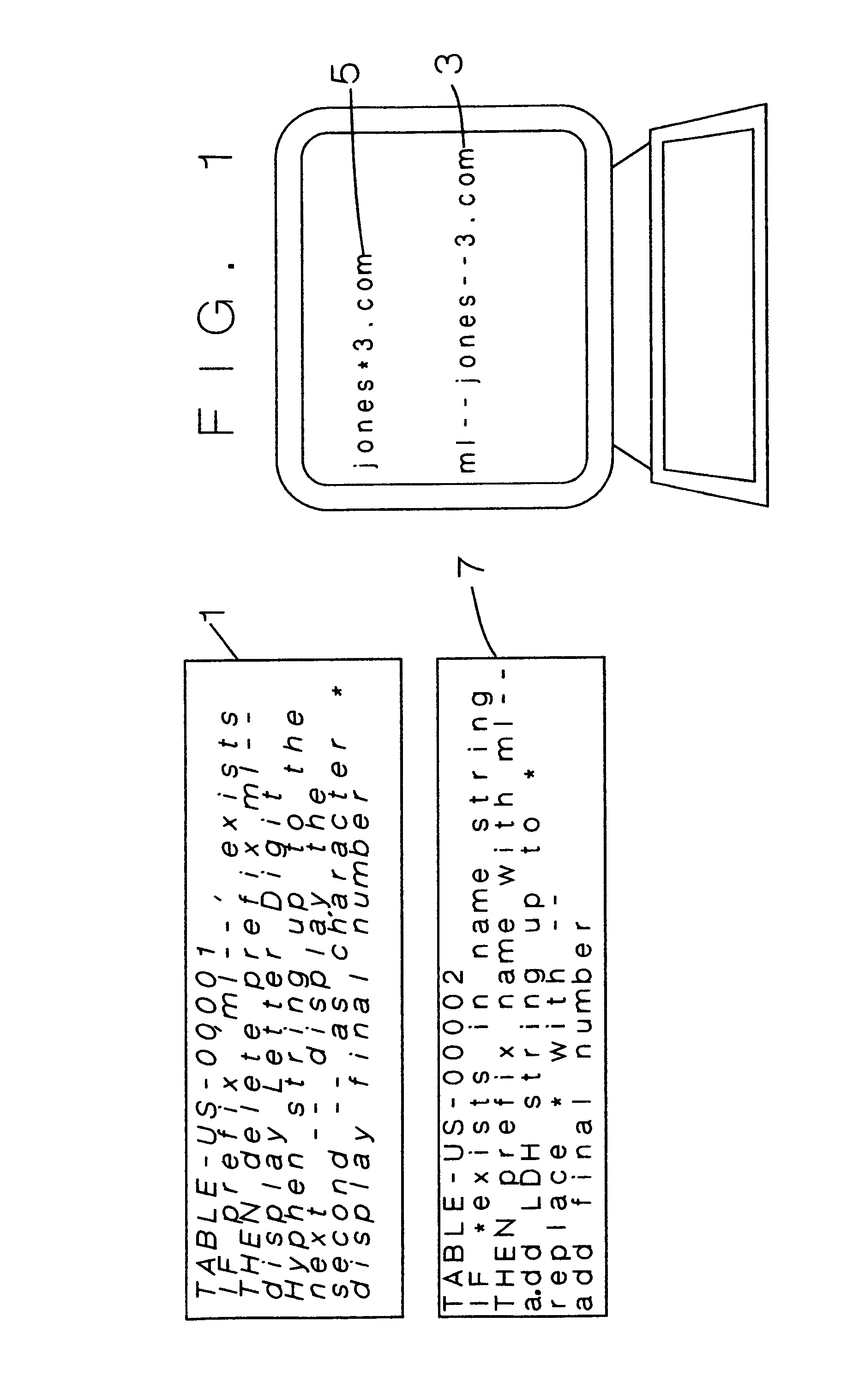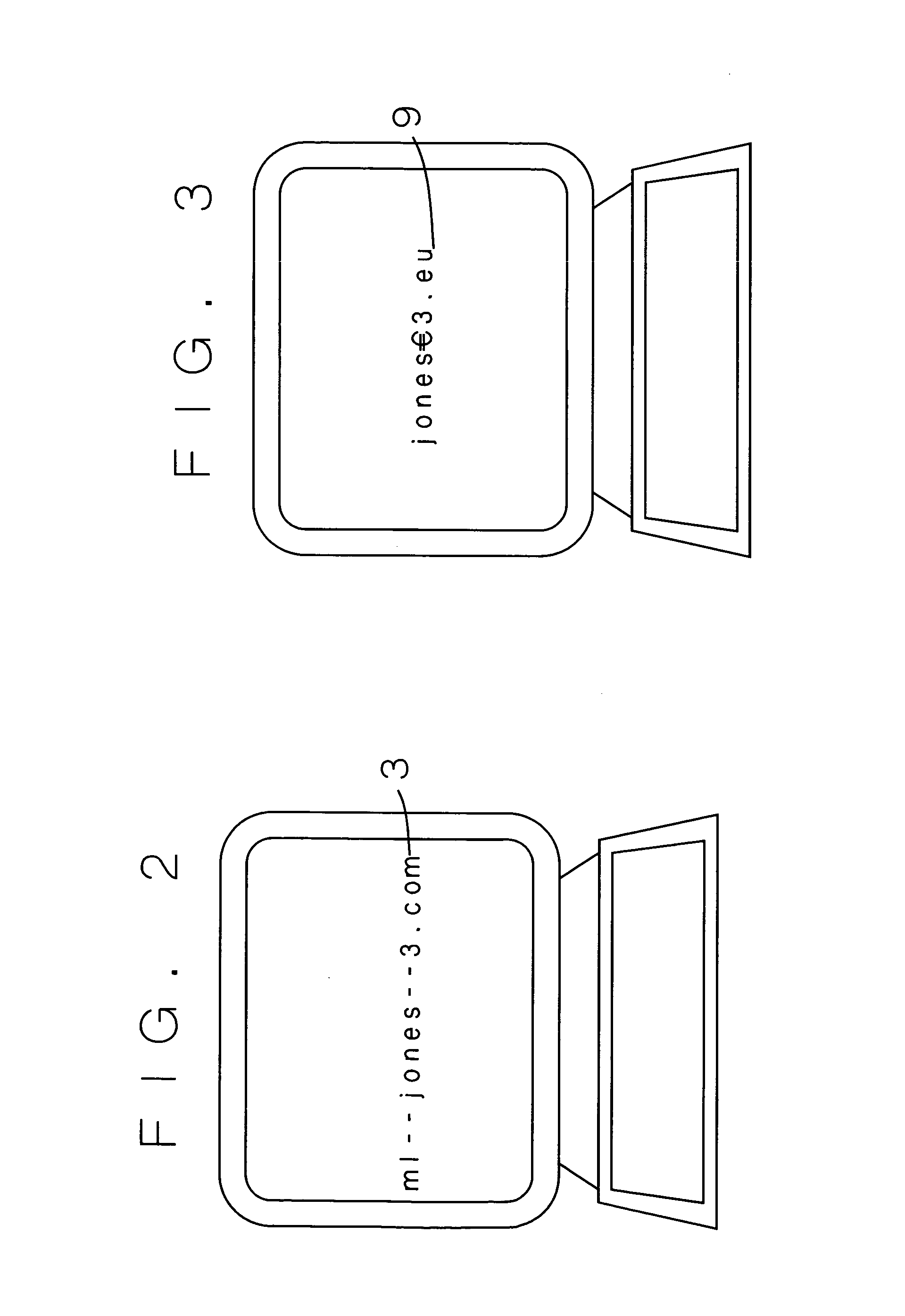Method and apparatus for multiplexing internet domain names
a technology of internet domain names and multiplexing, applied in the field of methods and apparatus for multiplexing internet domain names, can solve the problems of reducing the supply of appropriate names, .com tld, and many violations of trademark and other property rights, and human skill is not so skilled
- Summary
- Abstract
- Description
- Claims
- Application Information
AI Technical Summary
Problems solved by technology
Method used
Image
Examples
example 1
[0054]The IDN program doesn't allow # or * since these characters have the same numerical value in both ASCII and Unicode and the IDN software would not translate them. These characters are still not allowed in the domain name system (are not in the accepted range of a-z, 0-9 and -) so any internationalized domain name that tried to include # or * would not be allowed. Multiplexed domain names using the * or # as a signal or function character would require a different piece of software with a simple translation function.
[0055]Turning now to FIG. 1 at Box 1, IF the ‘real’ registered domain name 3 is ml--jones--3.com, the system could process the second level domain name as follows: TABLE-US-00001 IF prefix ‘ml--’ exists THEN delete prefix ml-- display Letter Digit Hyphen string up to the next -- display the second -- as character * display final number.
[0056]From the user's side—the user types in (or clicks on a link) jones*3.com, shown at 5 and the software runs the following actio...
example 2
[0060]The un-translated name could also be used. Turning now to 3 in FIG. 2, You could type in ‘ml--jones--3.com’ and no translation would be necessary. It is similar in this way to all domain names in that you can type in the numerical IP address for a resource and not use domain name translation at all.
example 3
[0061]The current system for existing Internationalized Domain Names could be retained if a different function character were selected, such as, the Euro symbol shown at 9 in FIG. 3, for EU country code names. Internationalized Domain Names employ an edge application. The original restrictions of the DNS are maintained and new characters are translated to and from the limited ASCII of a-z, 0-9 and the hyphen. The Euro symbol could be used in European Union domain names and the existing IDN software can be used to handle it.
[0062]Since the Euro symbol is not part of the LDH ASCII character set, it would have to be translated just as the Swedish letter “A” with two dots above it has to be translated. Use of the Euro as a signal or function character in multiplexed domain names would require only agreement among those who register European domain names. National (country code) registries could standardize their own signal or function characters for multiplexing domain names.
PUM
 Login to View More
Login to View More Abstract
Description
Claims
Application Information
 Login to View More
Login to View More - R&D
- Intellectual Property
- Life Sciences
- Materials
- Tech Scout
- Unparalleled Data Quality
- Higher Quality Content
- 60% Fewer Hallucinations
Browse by: Latest US Patents, China's latest patents, Technical Efficacy Thesaurus, Application Domain, Technology Topic, Popular Technical Reports.
© 2025 PatSnap. All rights reserved.Legal|Privacy policy|Modern Slavery Act Transparency Statement|Sitemap|About US| Contact US: help@patsnap.com



